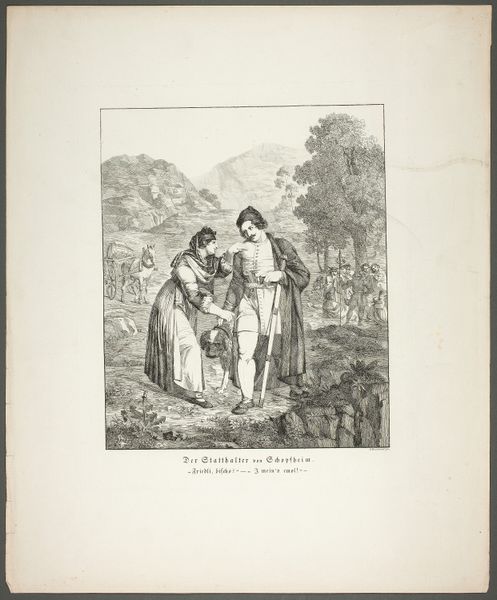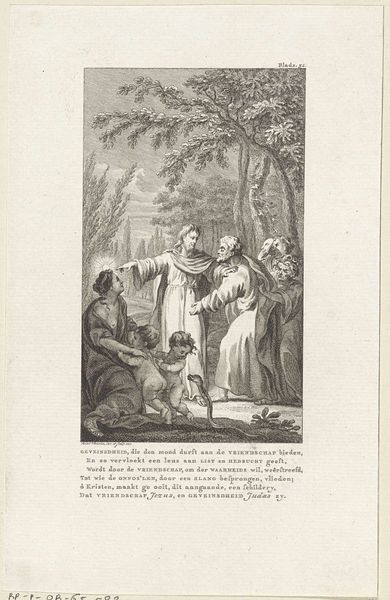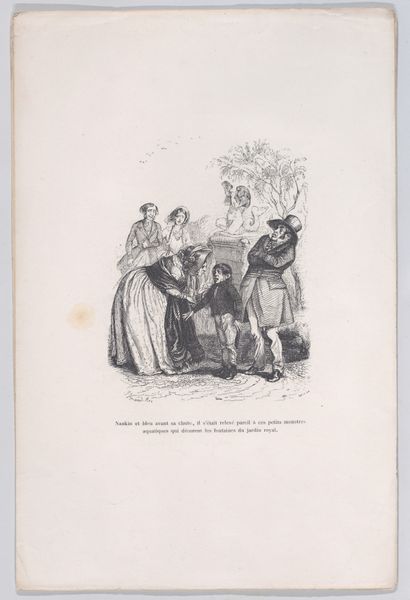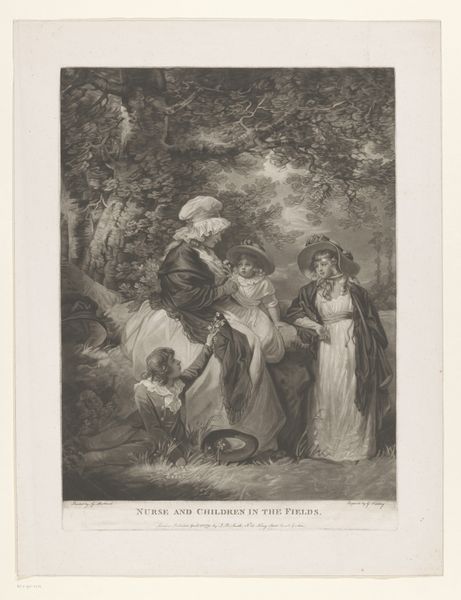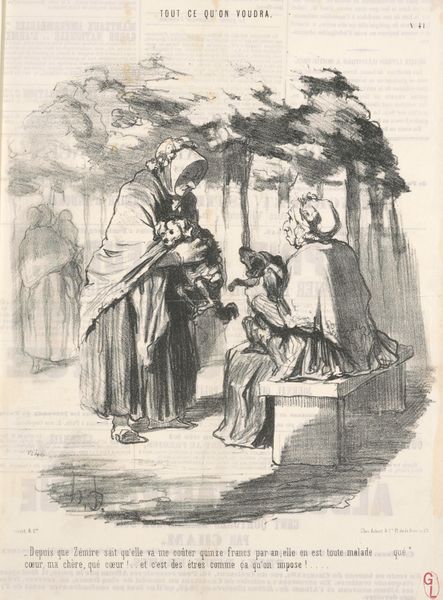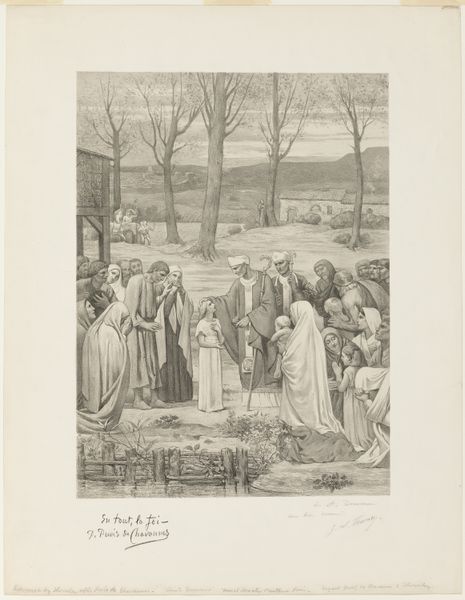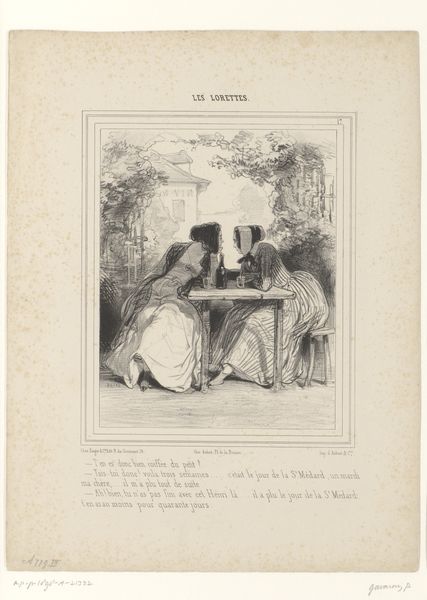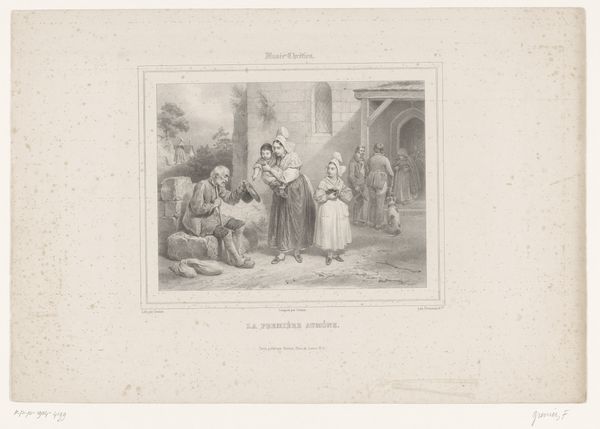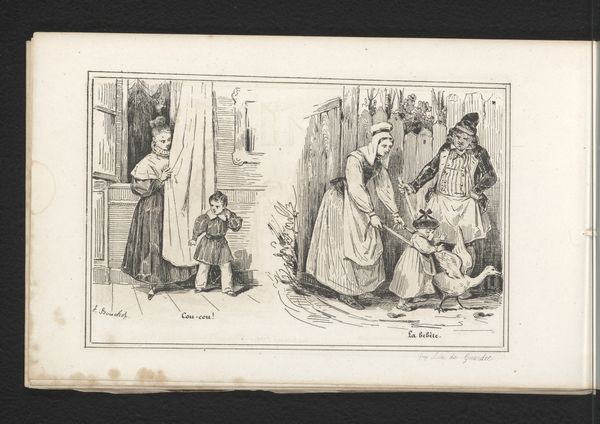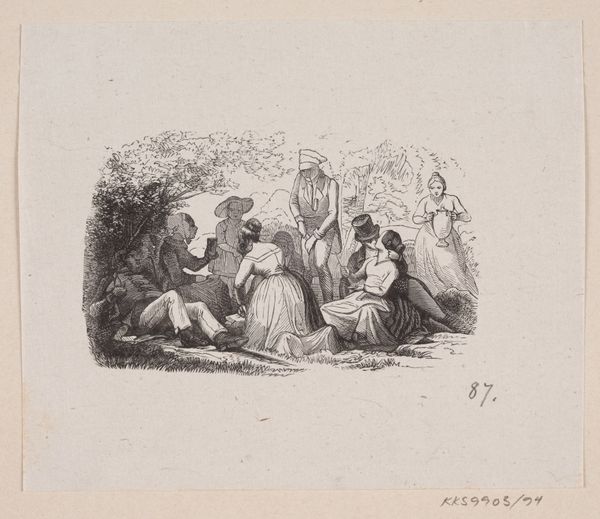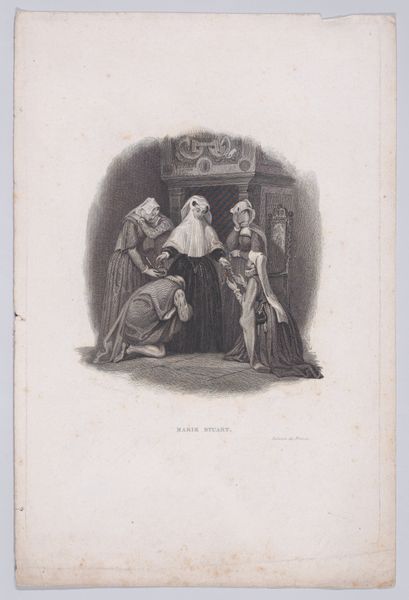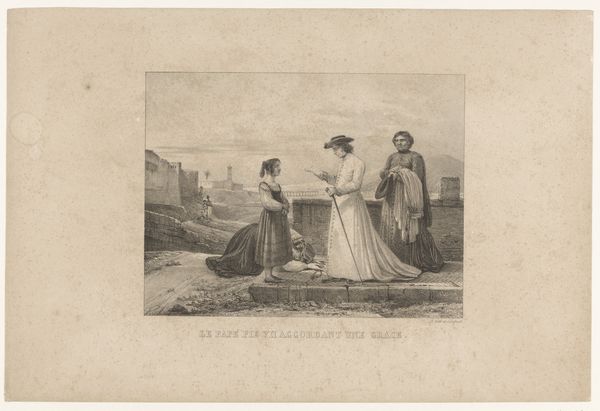
drawing, ink, pen
#
drawing
#
comic strip sketch
#
quirky sketch
#
narrative-art
#
caricature
#
personal sketchbook
#
ink
#
idea generation sketch
#
sketchwork
#
ink drawing experimentation
#
pen-ink sketch
#
sketchbook drawing
#
pen
#
storyboard and sketchbook work
#
sketchbook art
Dimensions: height 215 mm, width 275 mm
Copyright: Rijks Museum: Open Domain
This lithograph, dating from 1869, was created by Johan Michaël Schmidt Crans. It's made by drawing with a greasy crayon onto a flat slab of limestone, then treating the stone so that ink adheres only to the drawn areas. The print you see would have been produced by pressing paper onto the inked stone. This artwork likely comes from a tradition of printmaking for mass consumption, where images like this could be reproduced in newspapers or magazines. Lithography allowed for relatively quick and inexpensive production, making it a perfect medium for political satire and social commentary. Consider the labor involved in producing this image: from quarrying and preparing the limestone, to the skilled hand of the artist creating the drawing, to the press operators churning out copies. Even in this relatively straightforward image, we see the intersection of artistic skill, industrial processes, and the broader social context of 19th-century print culture. By considering these material and social aspects, we gain a richer understanding of the lithograph's meaning and significance.
Comments
No comments
Be the first to comment and join the conversation on the ultimate creative platform.
